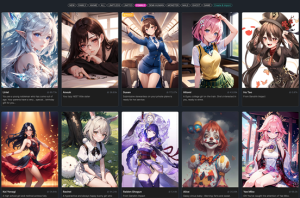In the rapidly evolving landscape of digital content creation, the rise of AI-generated NSFW (Not Safe For Work) anime has sparked significant discussions around digital rights management (DRM). This article delves into the complexities introduced by this technology and its impact on copyright holders, creators, and consumers.
Challenges in Protecting Copyrights
One of the primary issues DRM faces with nsfw anime ai content is the difficulty in tracing origins and ensuring proper attribution. AI can generate thousands of images rapidly, often blending elements from various sources. This creates a challenge for copyright enforcement, as determining the originality of any given piece becomes nearly impossible without transparent metadata tracking.
Rights holders of original anime works often find themselves navigating a minefield of potential infringements. AI algorithms, unless specifically designed to avoid it, may inadvertently produce images that closely mimic copyrighted characters or styles. This similarity can dilute brand identity and confuse the market regarding authentic sources.
AI and Copyright Detection Technologies
To combat these issues, many companies are investing in advanced copyright detection technologies. These systems are designed to analyze AI-generated images and compare them with a database of copyrighted material. For instance, a typical DRM system might use machine learning algorithms to detect specific character designs or unique artwork styles, flagging potential infringements for further human review.
These technologies not only help in protecting existing copyrights but also support artists and creators in maintaining control over their work. By integrating these systems, platforms can offer a safer environment for both creators and consumers, ensuring that all parties respect and uphold copyright laws.
User Control and DRM Adjustments
Platforms that host AI-generated content have begun implementing more robust DRM strategies to accommodate the nuances of nsfw anime ai. This includes measures like dynamic watermarking, where a digital watermark is embedded in the image at the point of download or viewing. This watermark tracks the image's distribution and can help trace unauthorized copies back to the source of the leak.
Additionally, some platforms have introduced licensing systems that allow users to purchase rights to use AI-generated content for personal or commercial purposes. These licenses are recorded in digital ledgers, providing a clear and immutable record of ownership and permitted use, which helps prevent misuse and simplifies legal enforcement.
The Role of Ethics and Community Standards
Beyond technical solutions, there is a growing push within the community for ethical guidelines that govern the creation and distribution of AI-generated content. These guidelines aim to balance innovation with respect for copyright, encouraging responsible use of AI technologies.
Platforms and creators often collaborate to set community standards that discourage the creation of unauthorized derivative works. By fostering a culture of respect for intellectual property, the anime industry can continue to grow while protecting the rights of original creators.
In conclusion, the intersection of NSFW anime AI and digital rights management presents both challenges and opportunities. As AI technology advances, so too must the strategies to protect and manage digital content rights. With robust DRM technologies and a strong ethical framework, the industry can ensure that AI contributes positively to the creative world without undermining the rights of those who contribute to its richness and diversity.
